Designing & launching a new human + AI content SaaS platform
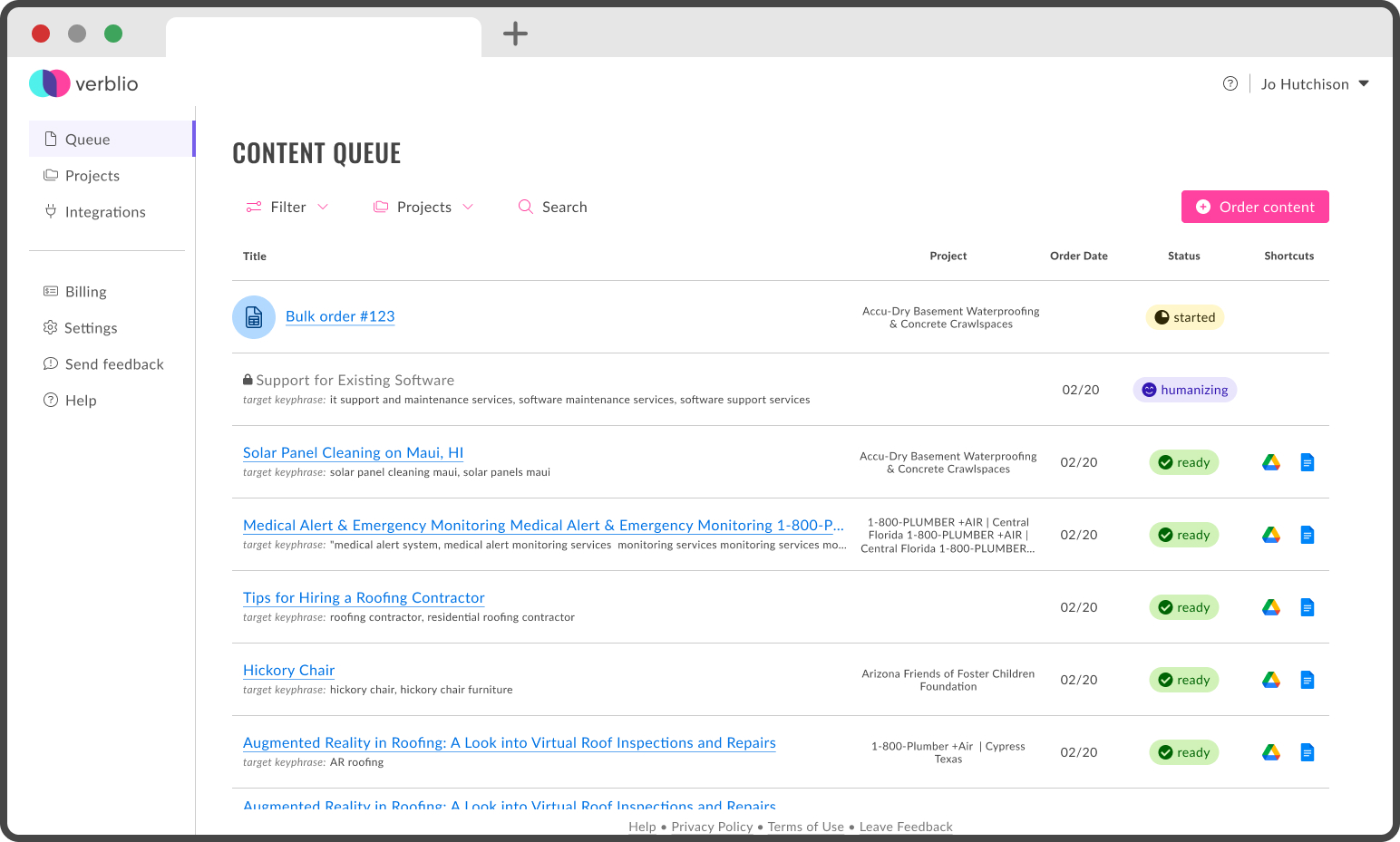
Project Context: The “Why”
This project focused on building a new hybrid Human + AI content platform from the ground up to effectively test an AI product, using lessons learned from the limitations of the our old, outdated legacy platform. The outdated platform’s complexity and instability made rapid testing and iteration difficult, so we needed to leverage modern technologies to create a more maintainable, scalable solution…and we needed to do it fast.
-
My role
Lead Product Designer
-
My team
2 full time developers
2 part time developers
1 QA specialist
-
Responsibilities
Project lead
Engineering Manager
Product Manager
UX Researcher
UI Designer
Prototyper
Design System Architect
-
Platforms*
Desktop
Tablet
Mobile
*browser-based application
-
Tools
Figma (design)
Jira (project management)
Ruby on Rails
Angular 7
Tailwind CSS
Make
Airtable
OpenAI
Problems
Opportunities
Pressure to Launch Quickly
The rapidly evolving AI market demanded a swift go-to-market strategy to gather feedback before the landscape shifted further. Larger competitors with greater funding created intense pressure, making it challenging to keep pace and establish a foothold in a highly competitive environment.
Closer Design-Dev Collaboration
The challenge presented a chance to foster closer collaboration between the design and development teams, unlocking the potential of what a tightly aligned group could achieve. It also offered career growth and leadership opportunities, allowing individuals to step up in new ways.
Balancing Content Speed and Quality
We faced growing pressure to deliver content faster without compromising quality. Our existing model, reliant entirely on human effort, struggled to keep pace with the instant results offered by AI competitors. Competing in this landscape required a solution that balanced speed with the high standards our users expected.
Modernizing Tools and Processes
This challenge provided an opportunity to adopt modern tools like Slack and Airtable, which could improve writer outreach and communication. This was also an opportunity to streamline internal processes, removing common roadblocks and enhancing efficiency. Additionally, implementing more powerful writer management tools significantly increased admin productivity and created a smoother workflow.
Challenges of an Outdated Platform
The old platform was built on tangled code, making it difficult to develop and expand. Outdated languages required frequent updates, while numerous fragile components broke often, disrupting workflows. The database was poorly structured, with inscrutable table relationships that added complexity and confusion to even simple tasks.
Opportunity to Rebuild Smarter
This challenge offered the chance to rebuild using updated languages, creating a stack that is modern and maintainable for a small team. We could design a logical, user-friendly database structure that simplifies reporting and ensures clarity. By shaping the platform from the ground up, we could gain full control over its foundations, enabling us to build “the way we want” and create a system ready to migrate old accounts, effectively upgrading the entire product.
Problems & Opportunities
Pressure to Launch Quickly
The rapidly evolving AI market demanded a swift go-to-market strategy to gather feedback before the landscape shifted further. Larger competitors with greater funding created intense pressure, making it challenging to keep pace and establish a foothold in a highly competitive environment.
Closer Design-Dev Collaboration
The challenge presented a chance to foster closer collaboration between the design and development teams, unlocking the potential of what a tightly aligned group could achieve. It also offered career growth and leadership opportunities, allowing individuals to step up in new ways.
Balancing Content Speed and Quality
We faced growing pressure to deliver content faster without compromising quality. Our existing model, reliant entirely on human effort, struggled to keep pace with the instant results offered by AI competitors. Competing in this landscape required a solution that balanced speed with the high standards our users expected.
Modernizing Tools and Processes
This challenge provided an opportunity to adopt modern tools like Slack and Airtable, which could improve writer outreach and communication. This was also an opportunity to streamline internal processes, removing common roadblocks and enhancing efficiency. Additionally, implementing more powerful writer management tools significantly increased admin productivity and created a smoother workflow.
Challenges of an Outdated Platform
The old platform was built on tangled code, making it difficult to develop and expand. Outdated languages required frequent updates, while numerous fragile components broke often, disrupting workflows. The database was poorly structured, with inscrutable table relationships that added complexity and confusion to even simple tasks.
Opportunity to Rebuild Smarter
This challenge offered the chance to rebuild using updated languages, creating a stack that is modern and maintainable for a small team. We could design a logical, user-friendly database structure that simplifies reporting and ensures clarity. By shaping the platform from the ground up, we could gain full control over its foundations, enabling us to build “the way we want” and create a system ready to migrate old accounts, effectively upgrading the entire product.
What We Did
I used the Double Diamond methodology to guide the design and build of this project, ensuring a structured yet flexible approach to solving the problem.
- In the Discover phase, I conducted user research, gathered insights, and explored the challenges of our legacy platform, diving deep into user pain points and system limitations.
- Moving into the Define phase, I synthesized the data to clearly define the core issues, aligning the team around tightly focused user flows.
- During the Develop phase, I led brainstorming sessions, prototyping multiple solutions and iterating on ideas, ensuring we stayed open to different possibilities while keeping user and business needs at the forefront.
- Finally, in the Deliver phase, we tested prototypes, refined the platform based on feedback, and built a solution that met both user and business goals.
This iterative process allowed us to continuously improve the design, ensuring we built a solution that was both effective and scalable. It also allowed us to build very, very quickly, with design and development working in sync to deliver iteratively.
Some lil’ peeks into our process
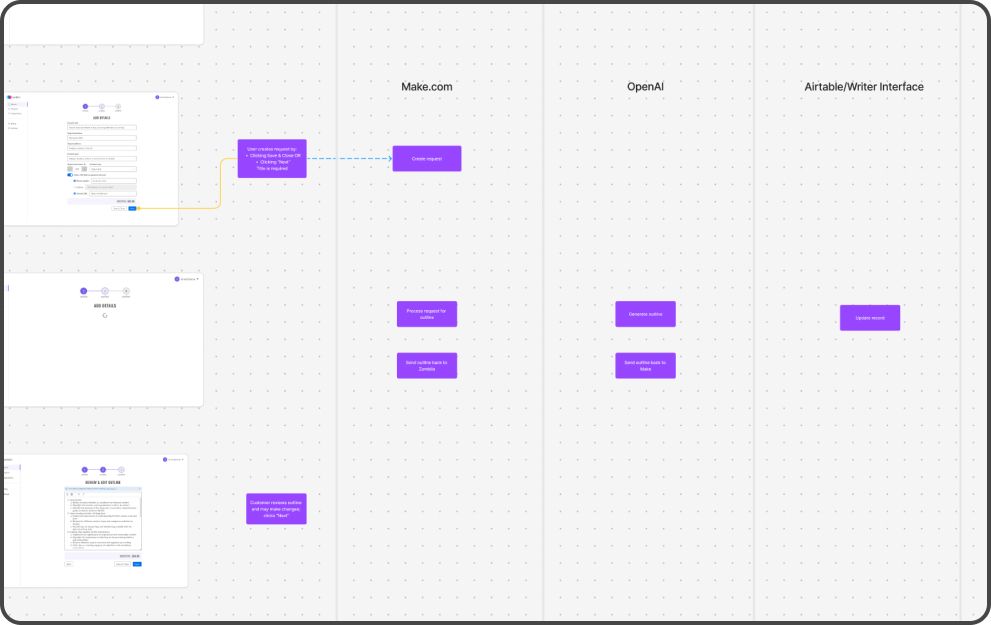
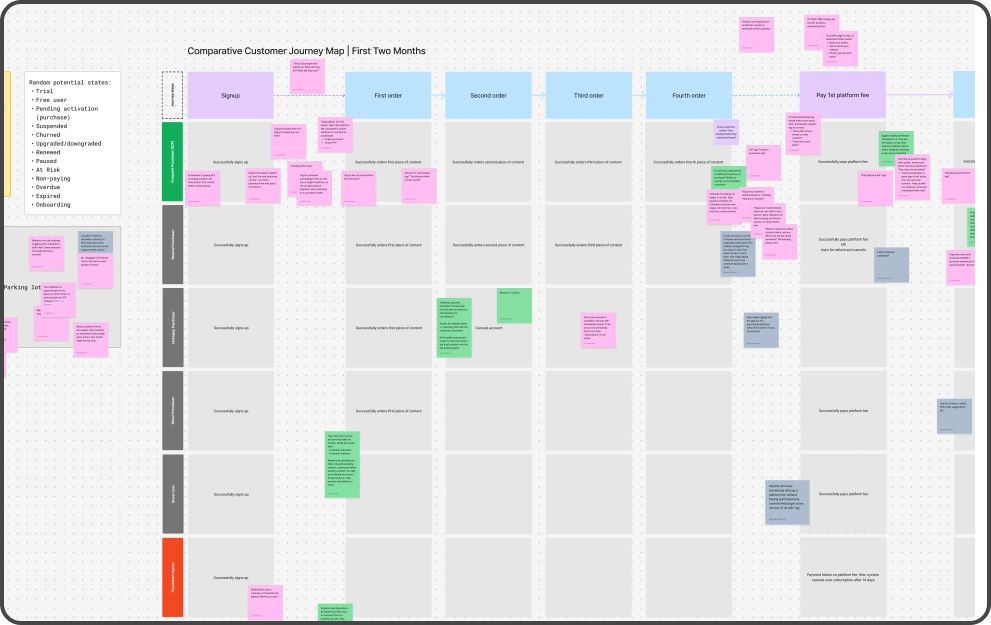

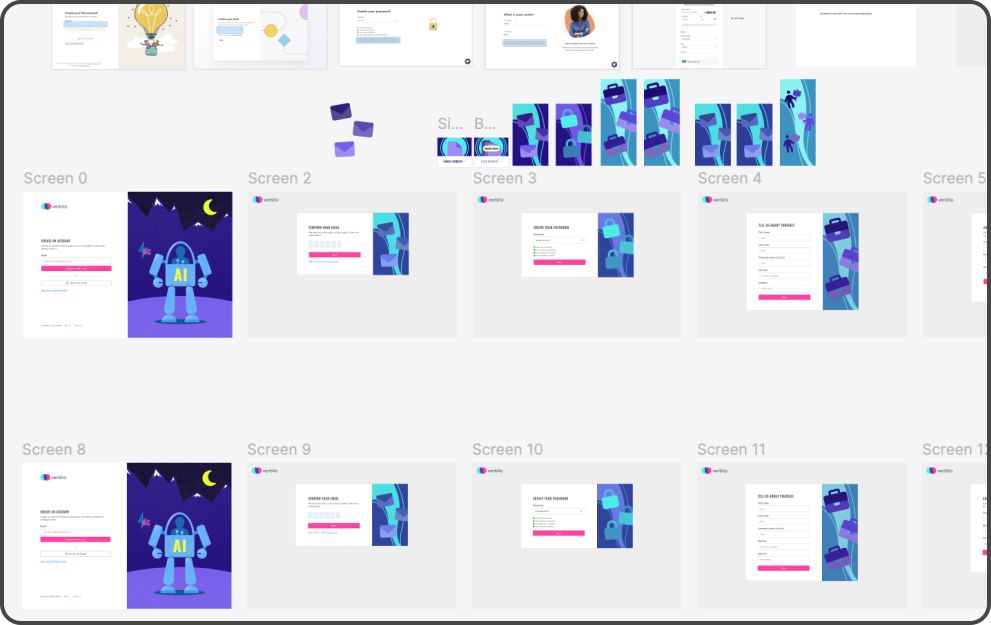
Final Designs
After many, many iterations, we were finally ready to start building! The final designs reflect a careful balance between user needs, technical feasibility, and business goals. My contribution to this project continued after the design phase, of course, but check out these mocks!

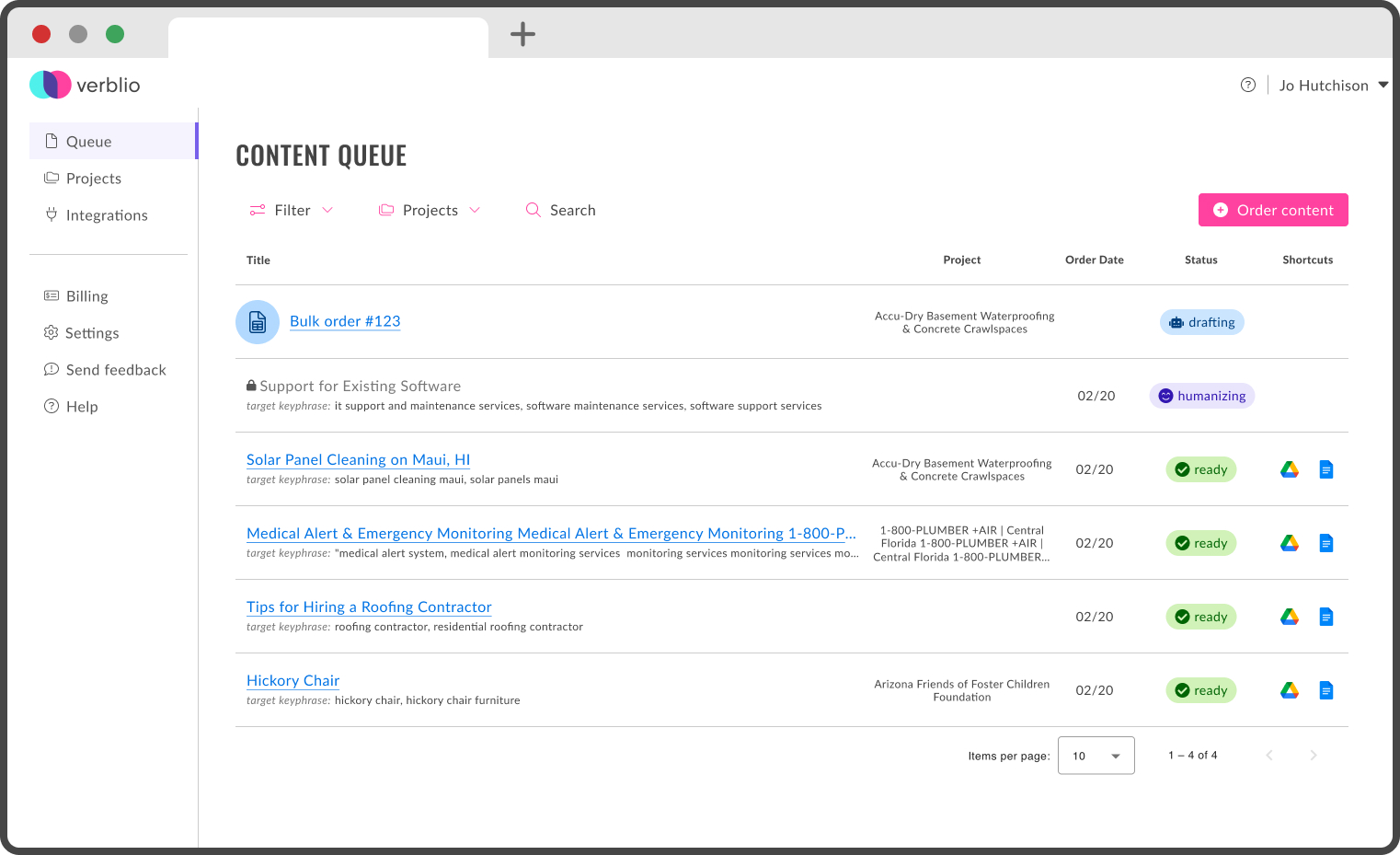
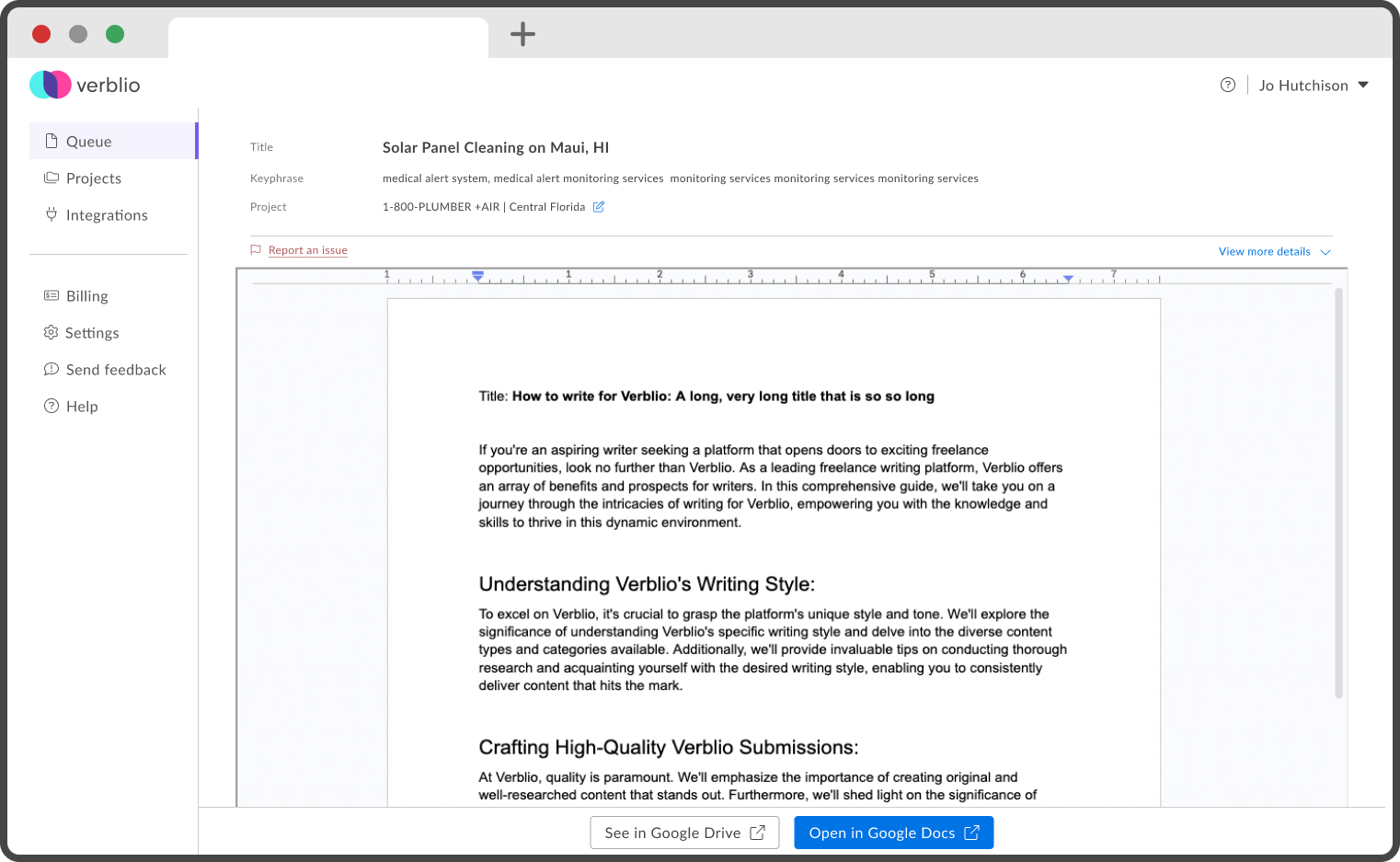
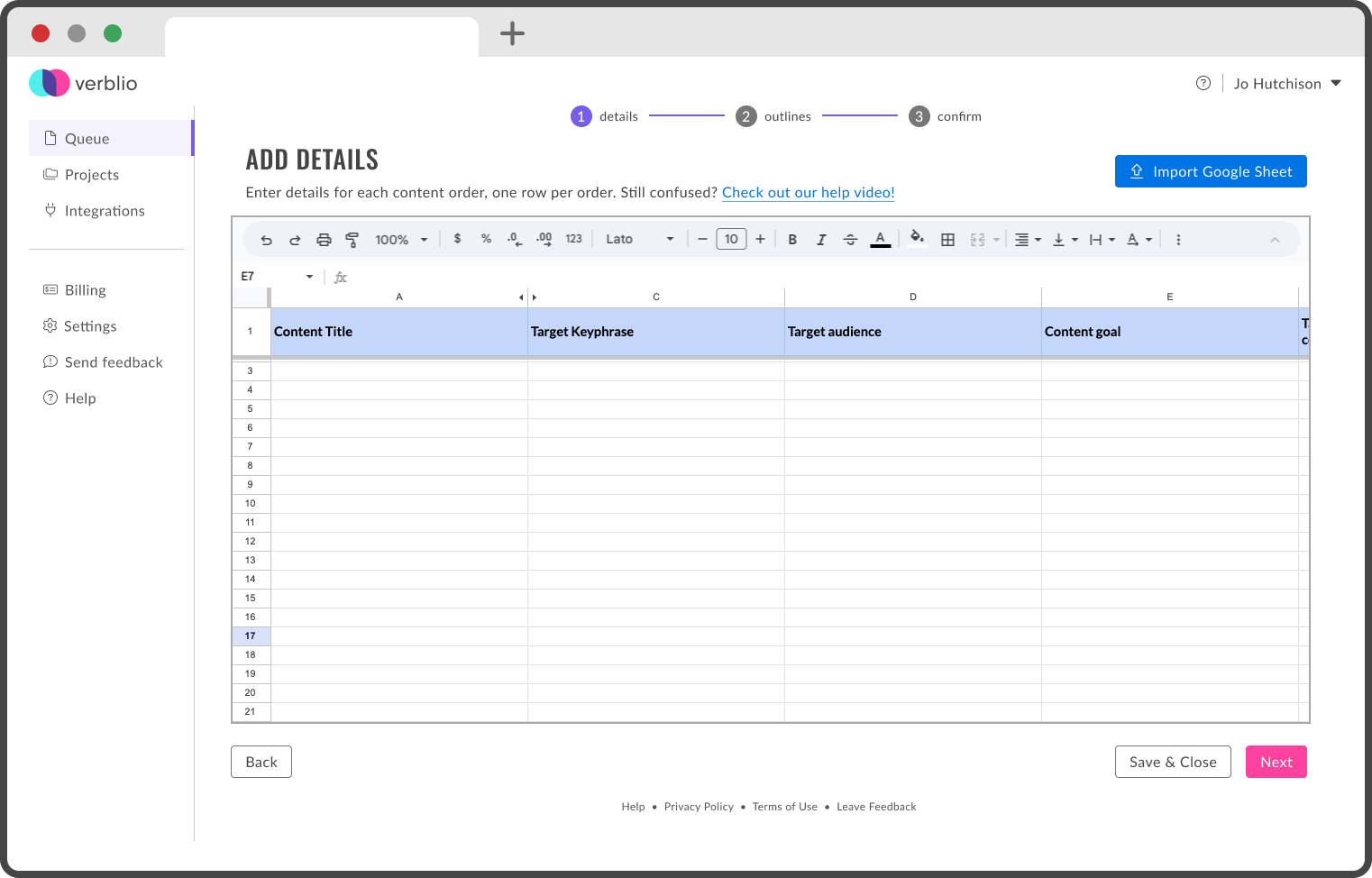
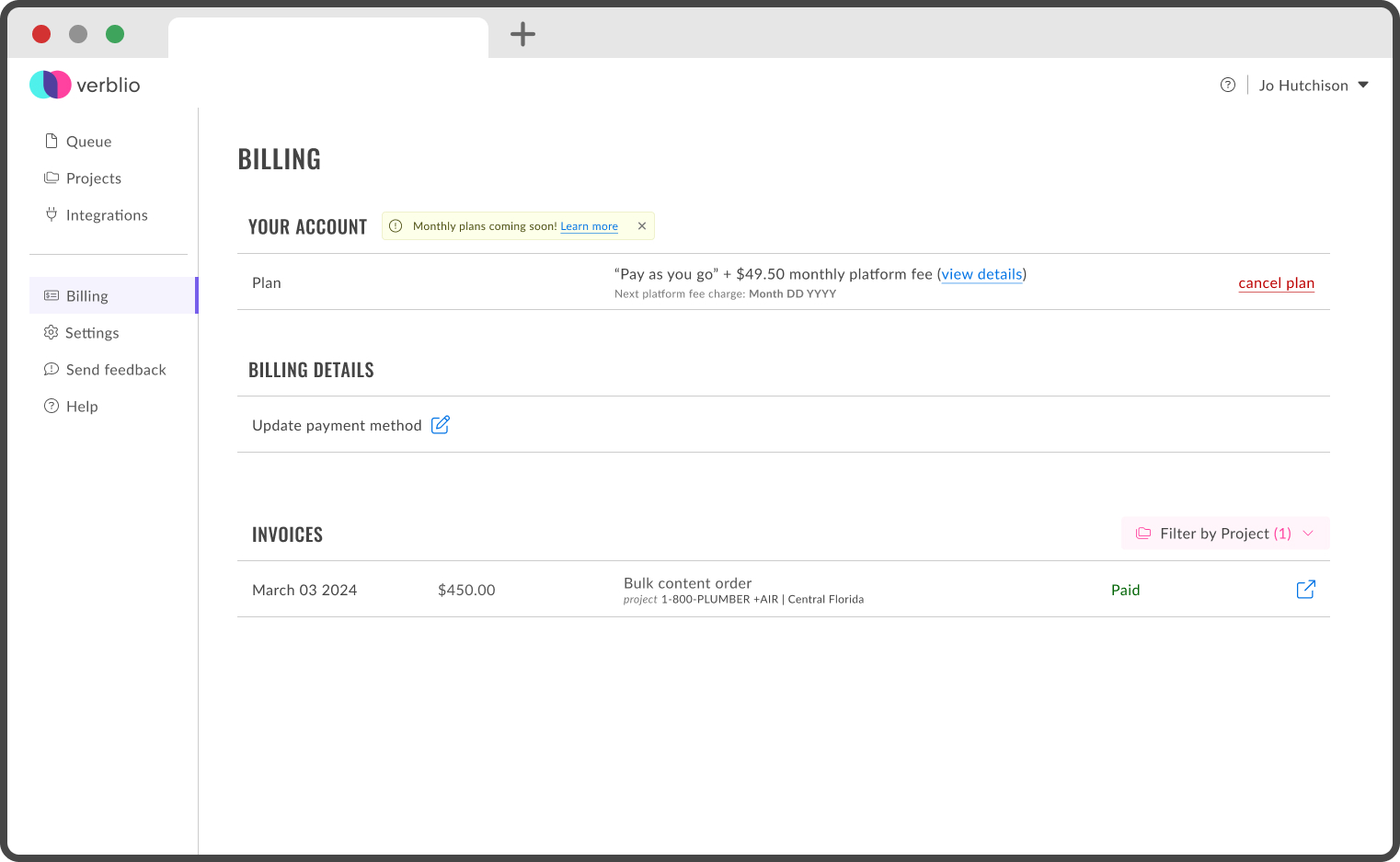
Results: Design Magic!!
Discovery to Delivery in 3.8 Months
In just 3.8 months, we went from discovery to delivery, rapidly building and releasing a functional MVP. This allowed us to start acquiring users and gathering valuable market feedback almost immediately. The core team, strengthened by iron-clad collaboration, set a precedent for consistently fast and efficient development cycles.
Decreased Delivery Turnaround by 24%
Product delivery time decreased by at least 24%, with the actual impact likely even greater due to improvements in content quality. Customers began receiving writers’ content more quickly, enhancing satisfaction and engagement. Streamlined processes eliminated internal friction, creating a scalable system that supports growth without adding to the administrative workload.
Dev Productivity Increased by 103%
The development team became 103% more productive compared to the old platform, resulting in the successful creation of our flagship software. By using updated languages, we built a system that’s easy to maintain and scalable. The database’s logical and clear table relationships now make data reporting more accessible to the entire organization, improving overall efficiency.
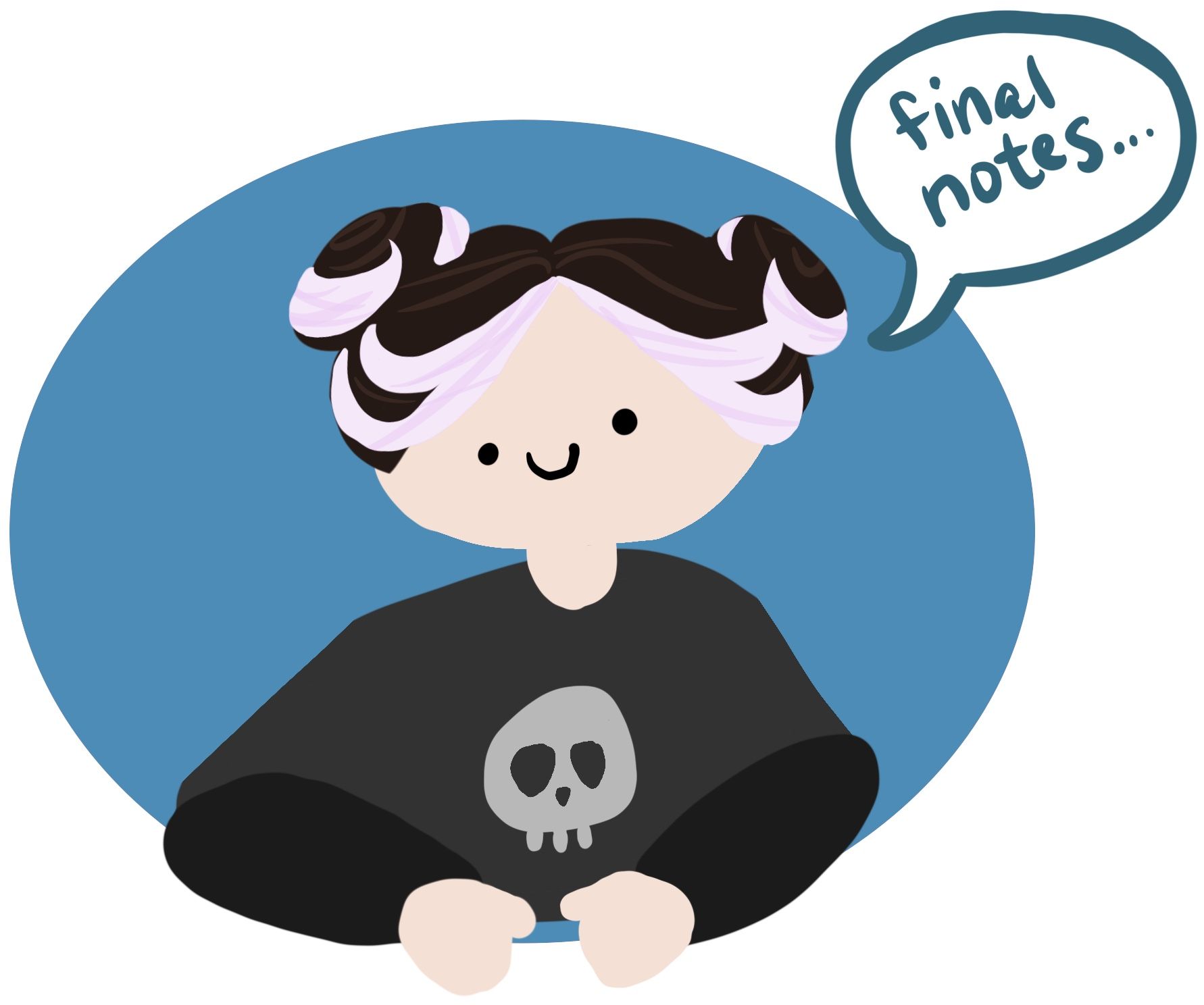


- Our dramatic decrease in support tickets (compared to the old platform)
- Our improvements in developer documentation
- How we leveled up the design system for a more perfect handoff
- Our post-launch roadmap, and the exciting stuff we did next
- …and more!!

